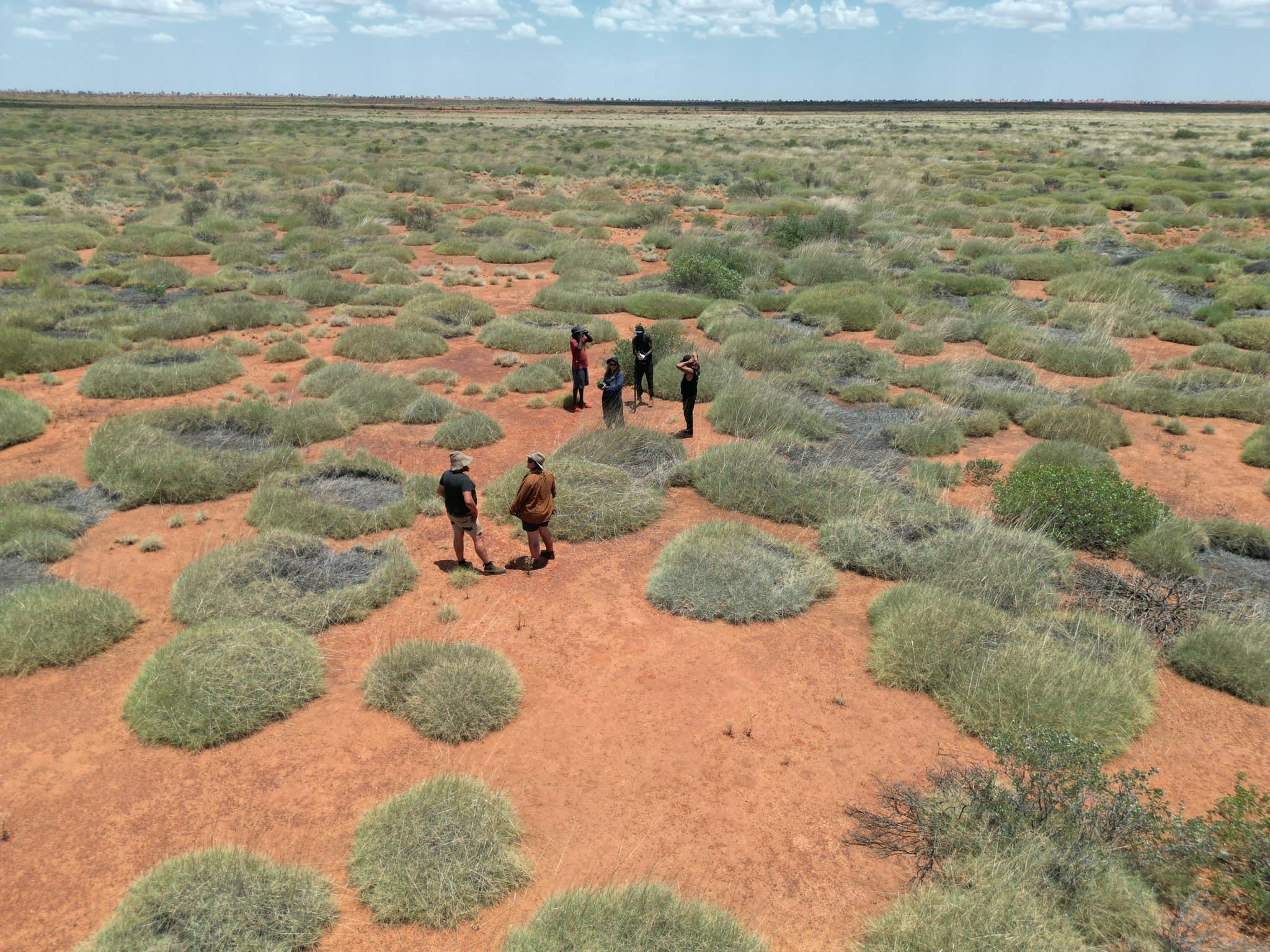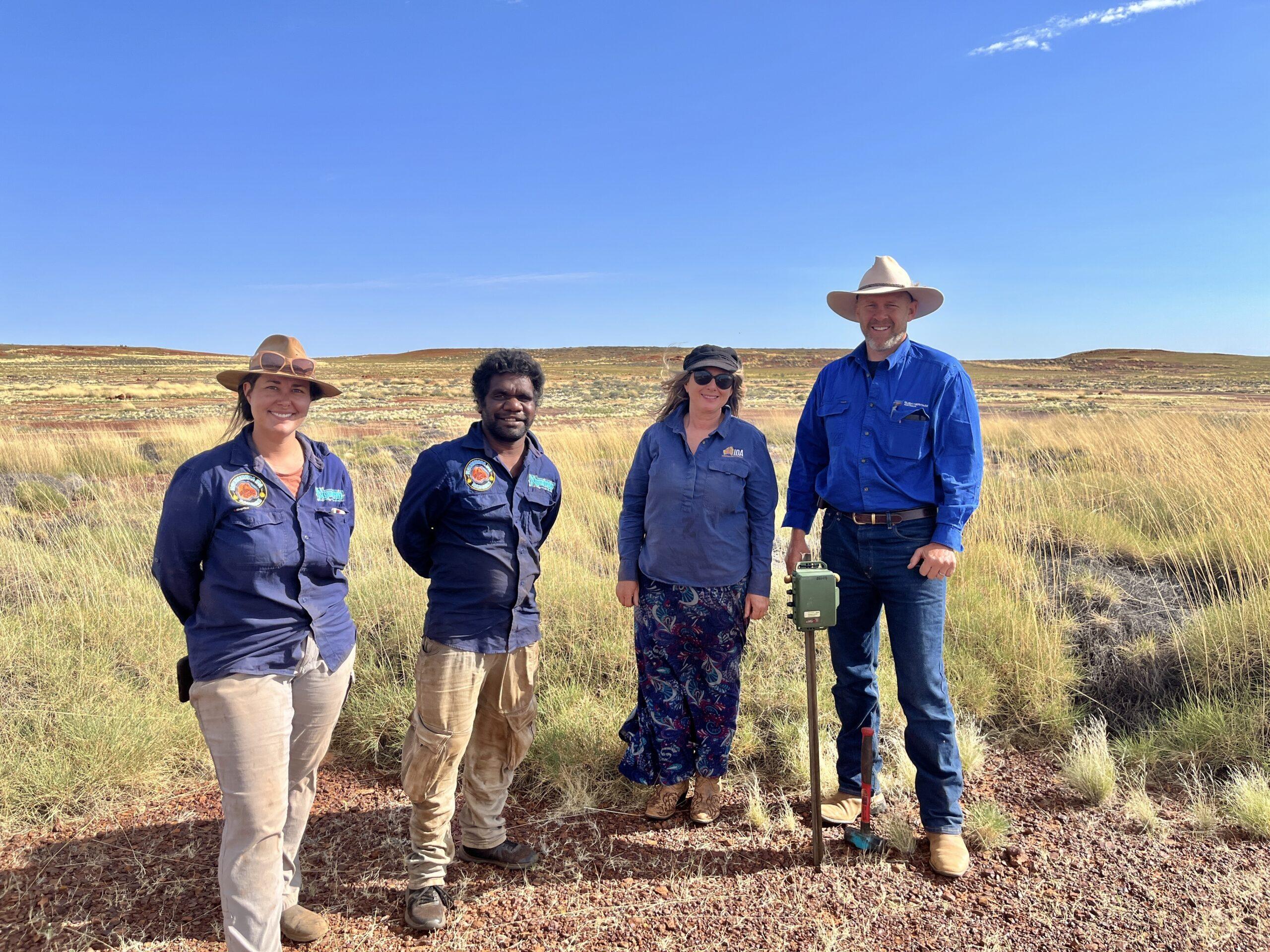23 September 2024
The night parrot is one of the rarest birds in Australia, but new research led by Indigenous rangers reveals that a stronghold of the species — potentially the largest known population in the world — is living on the Ngururrpa Indigenous Protected Area in central eastern Western Australia.
Green, gold and elusive, the night parrot (Pezoporus occidentalis) is a nationally endangered species.
Night parrots are ground-dwelling and nocturnal. At night, they emerge from spinifex clumps in arid and semi-arid parts of Australia to feast on seeds and herbs.
The species was thought to be extinct — imperilled by inappropriate fire regimes, feral cats and foxes, and habitat degradation — until it was rediscovered in 2013, at Pullen Pullen Reserve in Queensland. Before 2020, there were only occasional detections of night parrots from a handful of sites in Western Australia (WA).
But a paper, published today, reveals that there may be at least 50 night parrots on the Ngururrpa IPA in WA — the largest known population in the world. Night parrots were detected at 17 of 31 survey sites on the Ngururrpa Indigenous Protected Area (IPA). This is an exciting finding for one of the Threatened Species Action Plan’s Priority Species.
Ngururrpa Rangers are the lead authors of the paper. Their knowledge and skills are central to this research, part of a hub-funded project into desert threatened species, which is a collaboration with the Indigenous Desert Alliance.
 A night parrot captured on camera trap on the Ngururpa IPA (credit: Ngururrpa Rangers)
A night parrot captured on camera trap on the Ngururpa IPA (credit: Ngururrpa Rangers)
‘We the Ngururrpa Rangers have been looking for night parrots since 2019. First we thought they were only living in one area, on our neighbour’s country, but then we started checking in our area and ended up finding evidence that they are here. We are still looking for them, to make sure they are safe, and we are still finding them.’ — Clifford Sunfly, Ngururrpa Ranger
Little has been published on the WA populations of night parrots, compared to Queensland’s small, well-studied parrot population.
In WA, records are scattered across a large area of desert country, including the Ngururrpa IPA.
Declared in 2020, the Ngururrpa IPA is a 29,717 km2 area in the Pilbara region of central eastern WA. Ngururrpa means ‘our country in the middle’. It’s located in the Great Sandy Desert, between the communities of Balgo and Kiwirrkurra. The landscapes is made up of ‘vast areas of sandplains and dunefields interrupted by a series of low ranges and mesas … the sandplains are vegetated with sparse Acacia shrubland over spinifex’.
Today, Ngururrpa Rangers like lead author, Clifford Sunfly, follow Tjukurrpa to manage Country. They’re also playing a lead role in conducting research on Country, including the hub-funded desert threatened species project.
In this research on night parrots, the Ngururrpa Rangers worked with Andrew Schubert, Angela Reid, Nicholas Leseberg, Luke Parker and Dr Rachel Paltridge, to:

Older spinifex is perfect night parrot habitat (Image: Andrew Schubert)
‘We as Rangers are working together with the scientists to learn two-ways – the science way and the Traditional way. For the Traditional way, we read the country – by looking at the area and knowing where there could be water around, and looking at the plants they might eat and measuring the distance from where they could have their home to the water, to where they eat. We are also using technology, science way, to look for nests, and protecting their area from cats, camels and bushfires.’ — Clifford Sunfly, Ngururrpa Ranger
The Ngururrpa Rangers were lead authors of ‘Potential threats and habitat of the night parrot on the Ngururrpa Indigenous Protected Area’, published in the Wildlife Research journal [link].
Between 2020 and 2023, the research team used various methods to understand the ecology of night parrots on the Ngururrpa IPA, and the threats that they face.
 Some of the authors of the paper: Angela Reid, Clifford Sunfly, Rachel Paltridge and Nick Leseberg.
Some of the authors of the paper: Angela Reid, Clifford Sunfly, Rachel Paltridge and Nick Leseberg.
The research team found:
From this information the team has made recommendations on how to protect night parrots in the IPA.
Now that we know fire is a significant threat to night parrots, rangers can modify how they burn Country so that roosting sites are protected. The research team recommends ‘management that focuses on strategic burning to reduce fuel loads in the surrounding landscape, and limiting predator control to methods that do not harm dingoes’.
The researchers hope to inform improved knowledge of night parrots and a better way to care for WA deserts.
To read the paper, visit CSIRO Publishing.
Banner image: A night parrot captured on camera trap on the Ngururpa IPA (Credit: Ngururrpa Rangers)
Want to know more about the Resilient Landscapes Hub's activities and our research into practical solutions to environmental problems? Stay informed about activities, research, publications, events and more through the Hub newsletter.
"*" indicates required fields